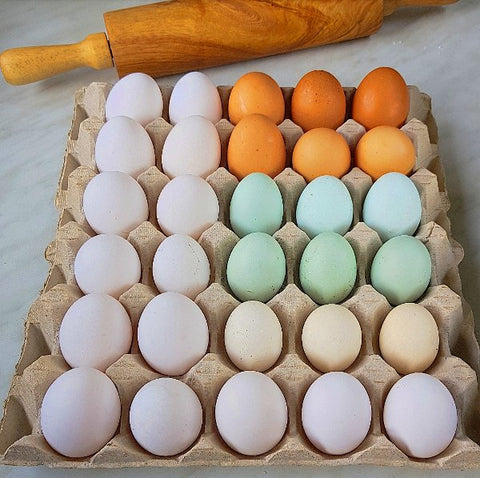BEAUTIFUL AND GOOD EGGS


You know by now how curious I am when it comes to 'new' ingredients.
When I discovered that a few kilometers from my house there was a small farm of Livorno and Araucana chickens I couldn't believe it!
Here I am to share what I have 'learned' and tasted.
The color of the eggshell does not depend on the type of diet of the hens but the factors that determine it are genetic and specific to each poultry breed.
The coloration of the shell occurs shortly before laying, when the internal layers of the shell are already formed. The oviduct is the canal that passes through the egg before it is laid and it is in the terminal area of the oviduct that there are glands that secrete lubricating factors that facilitate laying. This lubricating factor can vary from hen to hen between different breeds and between hens of the same breed (this is why the shades vary). It is precisely this lubricating liquid that influences the intensity of the final coloration of the external surface of the egg. This is why there are white eggs and colored eggs.
WHITE EGGS: These are very common and are laid by Livorno hens. It is believed, but not proven, that they have lower cholesterol and fat content than brown eggs. They are also beautiful to decorate for Easter!!
BLUE/GREEN EGGS: these are the eggs of the Araucana hens of South American origin and with an oval and robust body. The nutritional characteristics are similar to the eggs of other hens.
You can use them indifferently for any recipe, but I recommend that if you do not have a trusted breeder, buy those of category 0 (i.e. organic) or at most 1 (free-range).
123 John Doe Street
Your Town, YT 12345
Store Hours
Sun: Closed
Mon-Fri: 9:00 - 17:00
Sat: 10:00 - 13:00
What to expect at pickup
Closed
Closing at 5pm
Closing at 5pm
Closing at 5pm
Closing at 5pm
Closing at 5pm
Closing at 1pm